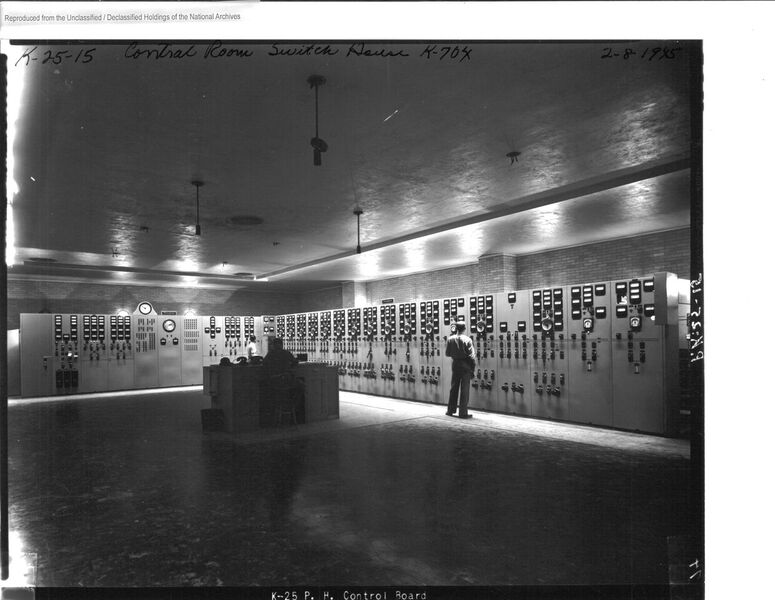Oak Ridge, Tennessee; Hanford/Richland, Washington; and Los Alamos, New Mexico highlighted in new exhibition opening May 3

WASHINGTON, D.C.—On May 3, the National Building Museum presents Secret Cities: The Architecture and Planning of the Manhattan Project. This new exhibition explores the vast, highly classified effort to produce the atomic bomb, with an emphasis on the three new “secret cities” that were built to accommodate the tens of thousands of people who worked on the project. Through original documents, photos, artifacts, maps, and models, the exhibition examines Oak Ridge, Tennessee; Hanford/Richland, Washington; and Los Alamos, New Mexico and how their design, planning, and construction proved vital to the success of the Manhattan Project. Secret Cities is open through March 3, 2019.
The development of the atomic bomb—the result of a military initiative known as the Manhattan Project —is one of the most consequential milestones in the history of science. The project laid the foundation not only for the Cold War, which raised the specter of global annihilation, but also nuclear power, as well as radiological medical applications that have saved countless lives.
The Manhattan Project owed its success not only to brilliant scientific work, but also to significant achievements in architecture, engineering, planning, and construction. The effort to produce the world’s first nuclear weapon would ultimately involve hundreds of thousands of people and require large-scale, highly secure facilities. In order to accommodate this vast enterprise, the U.S. government built three new cities from scratch: Oak Ridge, Tennessee; Hanford/Richland, Washington; and Los Alamos, New Mexico.
The speed and scale of construction of these cities were in many ways unprecedented. Influenced by the planned community movement and heavenly reliant on prefabricated construction, these cities were in many ways proving grounds for merging ideas about design and planning. Begun in late 1942, they collectively housed a total of more than 125,000 people by the end of the wr in August 1945. Yet these cities appeared on no maps, and their existence was a remarkably well-maintained secret until the bombing of Hiroshima.
Secret Cities will inevitably touch on difficult topics such as the use of nuclear weapons in combat, but the focus is on the communities that the government built to support the Manhattan Project. It examines the cities as case studies in modern urban planning and building technology, while revealing the distinct way of life that emerged at each site. the exhibition also explores the architectural and planning legacy and engineering firms, as exemplified by Skidmore, Owings & Merrilll (SOM), which oversaw the design of Oak Ridge. The exhibition also explores the postwar development of the three cities, which remain important centers of scientific research today.
PRESS PREVIEW
A press preview will be held on Tuesday, May 1 at 10 am, and feature a tour with curator G. Martin Moeller, Jr. RSVP to Emma Filar at efilar@nbm.org. Space is limited.
IMAGES
Images are available at go.nbm.org/secretcitiespress. Caption and crediting information is provided in the same folder.
SPONSORS
This exhibition is supported in part by an award from the National Endowment for the Arts, We also gratefully acknowledge STUDIOS Architecture; Alan M. and Nathalie P. Voorhees Fund of The Community Foundation Serving Richmond and Central Virginia, and of the Community Foundation for Northern Virginia, in honor of Fred H. Zimmerli; Bechtel; the Graham Foundation for Advanced Studies in the Fine Arts; HDR, Inc.; Skidmore, Owings & Merrill Foundation; and ORAU for their generous contributions.
ABOUT
The National Building Museum inspires curiosity about the world we design and build. We believe that understanding the history and impact of architecture, engineering, landscape architecture, construction, and design is important for all ages. Through exhibitions and educational programs, we show how the built world has power to shape our lives, communities, and futures. Public inquiries: 202.272.2448 or visit www.nbm.org. Connect with us on Twitter, Facebook, and Instagram.
